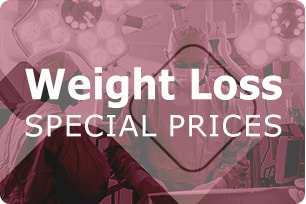Introduction to Symptoms of Acid Reflux
Many people experience occasional heartburn or indigestion. However, frequent acid reflux could signal a deeper problem. When acid flows from the stomach into the esophagus, irritation follows. This condition often leads to uncomfortable symptoms.
Recognizing the symptoms of acid reflux early helps prevent serious issues. Some symptoms are common and easy to spot. Others may be subtle and misinterpreted. Either way, knowing what to look for is important.
In this guide, we will explore the causes, main symptoms, lesser-known signs, and treatments. We will also share lifestyle tips that can make a big difference.
Causes of Acid Reflux
Acid reflux begins when the lower esophageal sphincter, or LES, fails to close properly. This ring of muscle normally keeps stomach contents where they belong. When it weakens or relaxes at the wrong time, acid escapes upward.
Common causes include:
- Eating large meals or eating late at night
- Drinking alcohol, coffee, or soda
- Smoking tobacco products
- Having a higher weight or being pregnant can increase pressure in the abdomen, which raises the risk of acid reflux.
- Wearing tight clothing around the belly
- Lying down too soon after meals
Each of these factors increases pressure in the abdomen. That pressure pushes acid into the esophagus. To reduce flare-ups, it helps to identify and avoid personal triggers.
Primary Symptoms Acid Reflux Overview
The symptoms of acid reflux often affect the chest, throat, and mouth. While not every person feels the same effects, some signs are more common than others.
1. Heartburn
Heartburn feels like a burning sensation in the chest. It usually happens after eating or when lying down. The pain may rise toward the throat. Many people notice it gets worse after spicy or fatty meals.
2. Sour or Bitter Taste
When acid reaches the throat or mouth, it creates a sour or bitter flavor. This can linger, especially after meals. Some people notice it more in the morning.
3. Regurgitation
Regurgitation brings up food or sour liquid without vomiting. This may happen suddenly or after bending forward. It often feels unpleasant but is not painful.
4. Difficulty Swallowing
Over time, repeated acid exposure may narrow the esophagus. This leads to trouble swallowing, also called dysphagia. People often feel like food gets stuck in the throat.
5. Frequent Coughing
A chronic cough, especially at night, can be linked to reflux. Acid may irritate the throat or airways. This leads to coughing even without a cold.
Recognizing these symptoms can lead to faster treatment and better outcomes.
Lesser-Known Reflux Signs
Not all symptoms of acid reflux are obvious. In fact, some can mimic other conditions. Therefore, it’s important to understand the full range of possible effects.
1. Hoarseness or Voice Changes
When acid reaches the vocal cords, it can change your voice. As a result, many people feel hoarse in the morning. Speaking may feel strained or uncomfortable.
2. Feeling a Lump in the Throat
This symptom, called globus sensation, feels like something is stuck in the throat. It does not affect eating or drinking but can feel distressing.
3. Bad Breath
Acid and partially digested food in the mouth can create a foul odor. If brushing and flossing do not help, acid reflux could be the cause.
4. Chest Pain
Chest pain caused by acid reflux can feel sharp or dull. Always seek emergency care if you are unsure whether it’s from the heart or reflux.
In some cases, these signs may appear alone; however, they can also occur alongside typical symptoms. Therefore, pay close attention to patterns and frequency.
Nighttime and Pediatric Symptoms
Reflux can become more noticeable during the night. In children, it can appear very differently than in adults.
Nighttime Symptoms:
- Coughing while asleep
- Waking up with a sore throat
- Trouble sleeping or frequent waking
- Bitter taste in the mouth at night
Pediatric Symptoms:
- Spitting up or vomiting
- Irritability during or after feeding
- Poor weight gain
- Arching the back while crying
- Trouble swallowing
Parents should consult a pediatrician if they see these signs regularly.
When to See a Doctor
Occasional reflux is not unusual. However, persistent symptoms require medical attention. The longer acid damages the esophagus, the higher the risk for complications.
See a doctor if you:
- Have heartburn more than twice per week
- Find it hard to swallow
- Notice weight loss without trying
- Vomit frequently
- See black or bloody stools
Prompt diagnosis and care improve long-term outcomes. Your provider may also recommend lifestyle changes, medication, or tests.
Acid Reflux Testing and Diagnosis
To confirm acid reflux, doctors often rely on several diagnostic tools. First, these tests help identify any internal damage. Then, they guide decisions about the best treatment plan.
Common tests include:
- Upper endoscopy: A flexible tube with a camera checks for inflammation or damage.
- pH monitoring: A device measures acid levels in the esophagus over 24 hours.
- Barium swallow: X-rays taken after drinking a chalky liquid show any narrowing or blockage.
- Esophageal manometry: This test checks muscle function in the esophagus.
These tests are safe, and your doctor will choose the right ones based on your symptoms.
Lifestyle Habits That Help Manage Acid Reflux
Simple changes often relieve symptoms of acid reflux. Although results may vary, most people feel better after adjusting daily habits.
Try these strategies:
- Eat smaller meals more often
- Avoid lying down for at least 3 hours after eating
- Sleep with your head slightly elevated
- Lose extra weight if needed
- Wear loose-fitting clothing
- Avoid foods and drinks that cause flare-ups
Stay consistent with these habits to improve comfort and reduce reliance on medications.
Best Foods and Drinks for Acid Reflux
Diet plays a major role in acid reflux. Some foods calm the stomach, while others increase acid production.
Helpful foods:
- Oatmeal and whole grains
- Non-citrus fruits like bananas and melons
- Lean proteins such as chicken and turkey
- Cooked vegetables like spinach, carrots, and broccoli
- Low-fat yogurt or milk
Foods to limit:
- Citrus fruits and juices
- Tomatoes and spicy sauces
- Fried and fatty meals
- Chocolate and mint
- Caffeinated or carbonated drinks
Keep a food diary to track what works for you.
Acid Reflux Medication and Surgical Care
When lifestyle changes are not enough, medication helps. Several over-the-counter and prescription options are available.
Medication Types:
- Antacids: Provide fast, short-term relief (e.g., Tums)
- H2 blockers: Reduce acid production (e.g., famotidine)
- Proton pump inhibitors (PPIs): Stronger acid reducers (e.g., omeprazole)
If medications do not help, your doctor may suggest surgery. Procedures like fundoplication or the LINX device strengthen the LES and prevent acid from escaping.
These solutions work best when guided by a healthcare provider.
Prevention Tips and Final Thoughts on Acid Reflux
To prevent symptoms of acid reflux, it helps to take a proactive approach. Moreover, healthy habits, good food choices, and proper treatment all make a difference.
Prevention tips:
- Eat slowly and chew food well
- Avoid late-night meals
- Stay active and maintain a healthy weight
- Quit smoking
- Limit alcohol and caffeine
By following these tips, you reduce discomfort and protect your esophagus. Acid reflux is manageable, especially when treated early.
Always consult your doctor before beginning any treatment or making health decisions based on this blog.










